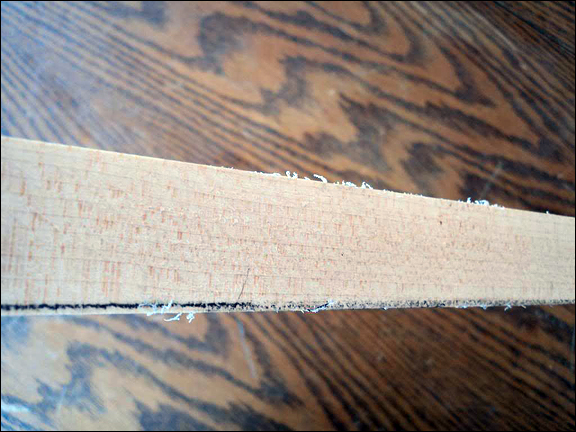
So, you want to make a bow and you don’t have any wood? Or maybe you just harvested a tree, but you need to wait until it dries and you still itching to make a bow right NOW? Then you may want to consider a board bow. A board bow can be made of hardwood board bought in a lumber yard or the lumber section from Lowes, Home Depot, Ace Hardware, etc. In the past, many believed that boards were not suitable for bows, but that has been proven wrong time and again. I myself attest that it is possible and I have made plenty of board bows to know some in the mid 70 lbs @ 28" draw lengths. I will address some of the important points of making a board bow, specifically selecting the wood.
The most important part of making a board bow is selecting the wood. The tiller is important too, but in board bows, I find this critical. This will be the difference between success and failure. When selecting a board think STRAIGHT GRAIN. This means that you want a board that you can see the grain or the lines of the wood straight from end to end, or at least the place you will be using. Preferably, it must be straight from the front and sides. Here’s a picture of the proper rings.

By the way, be warned that finding a suitable piece may take a lot of time, but it is a good investment. If you want to succeed, you must try to find the best piece possible, so take your time. The choice of wood is yours, but you want to avoid poplars, pine, redwood and any species that might be too light or too brittle. The wood I have had luck with in boards are oak, ash, and hickory. I do not recommend black walnut, which feels very light. I really did not like the bows I’ve made from it. The bow was too slow, plus it had string follow.
The following pictures show what you want to do next.
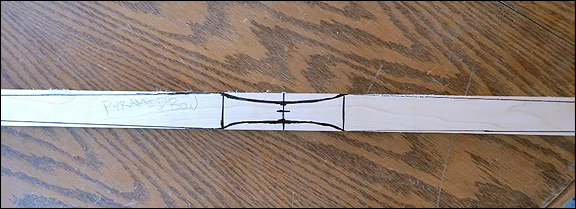
First, layout the bow.
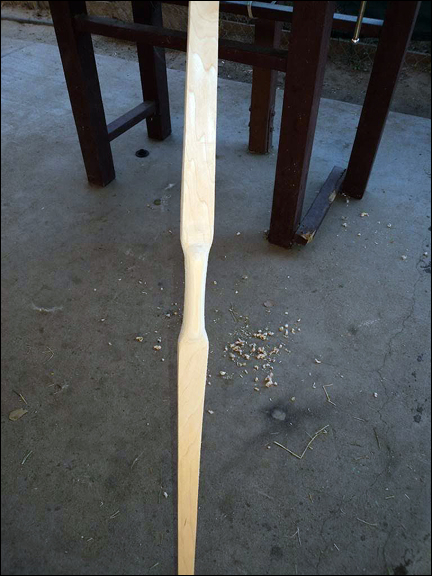
Cut the outline.
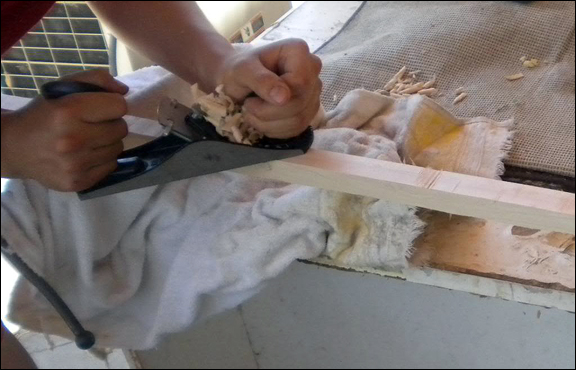
Start removing the wood. Note that I only remove wood with a saw, rasp, plane, and a cabinet scraper. The reason for not using a draw knife is that a drawknife tends to dig into boards more often than not. You may end up with a useless piece of wood, if you dig into the wood too much. So, it is better to avoid that all together and use a cabinet scraper instead. Another reason is that since most of the boards are ¾" thick, it will be relatively easy to get it down to floor tillering dimensions.
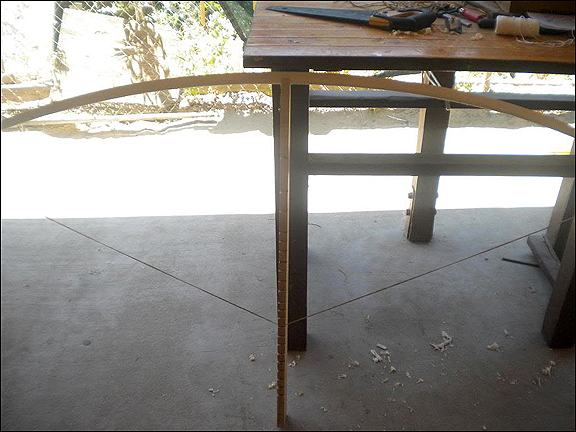
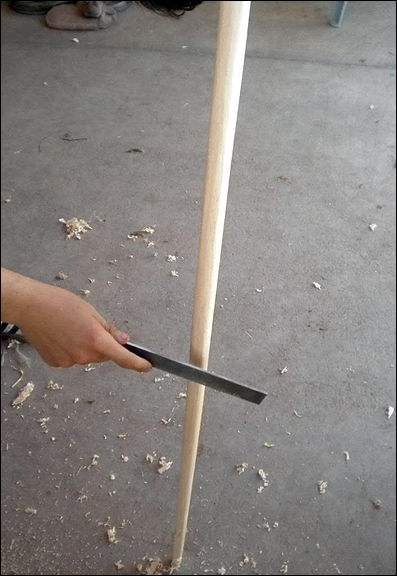
After removing the wood, you want to start tillering. The rest of the process is pretty much the same for stave bows.
Get an even tiller and you're done with the wood removal. Then, just finish the bow.
Selecting Grain for Bow Staves
Related board bow link:
http://sticknstring.webs.com/ferretsboardbow.htm
E-mail your comments to "Cesar Perez" at legionnairearchery@hotmail.com
Visit the Legionnaire Archery website to see the various bows made by Cesar.
We hope the information on the PrimitiveWays website is both instructional and enjoyable. Understand that no warranty or guarantee is included. We expect adults to act responsibly and children to be supervised by a responsible adult. If you use the information on this site to create your own projects or if you try techniques described on PrimitiveWays, behave in accordance with applicable laws, and think about the sustainability of natural resources. Using tools or techniques described on PrimitiveWays can be dangerous with exposure to heavy, sharp or pointed objects, fire, stone tools and hazards present in outdoor settings. Without proper care and caution, or if done incorrectly, there is a risk of property damage, personal injury or even death. So, be advised: Anyone using any information provided on the PrimitiveWays website assumes responsibility for using proper care and caution to protect property, the life, health and safety of himself or herself and all others. He or she expressly assumes all risk of harm or damage to all persons or property proximately caused by the use of this information.
© PrimitiveWays 2013